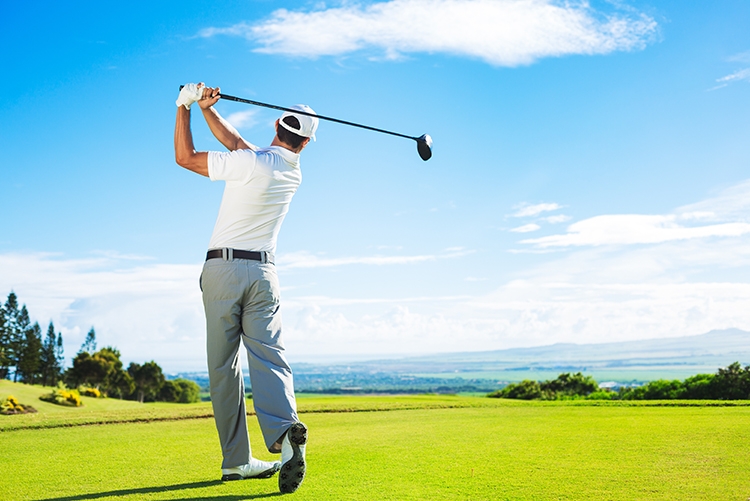This is a question I get almost every day; “When can I get back to playing golf?” or “When can I get back on my surfboard?”. These are tough questions to answer on your own especially if your favorite recreational activity is the reason why you’re at physical therapy right now.

We need to start by determining why you need physical therapy in the first place? While playing golf, did you injure your back because you never learned how to train with the proper technique, or are there other factors that come into play? Once we determine the answer to that question, we are able to begin strengthening, mobilizing, and stabilizing each area that you need to work on. As you begin your program, most exercises will seem fairly basic but they are prescribed to ensure you understand the fundamentals and how you can control the necessary musculature to prevent pain or any other symptoms to worsen. This is the first step to getting you back to your favorite activity!
As you start to build up your strength and stability with some of the more simplistic exercises, this is when the real fun begins! As we are able to progress you into more difficult and challenging exercises- exercises that target the muscles you need to build back up, we are getting you even closer to achieving your goals. The process of progressing a patient from basic to more dynamic exercises can happen relatively fast, or it can take some time. Either way, this is a process that differs for everyone depending on their current situation and limitations. At the end of the day, as long as you are doing your exercises properly and at the recommended frequency by your physical therapist, you will progress! Once we are able to transition you to a more dynamic exercise routine that somewhat replicates your desired activity, we are just one step closer to getting you back on track.

The next and last step before you are able to return to your activity of choice is to perform the exact movements that are required in your sport/activity. To be able to return to an activity like golf, pain-free or without risking re-injury, you need to ensure that you can rotate and produce enough power through your golf swing. As for running, you need to master a perfect gait pattern with walking, and later on with running. Muscle imbalance is another aspect that needs to be restored prior to returning to your activity. We call this stage of the healing process the “Return to Play” stage and it usually is the most exciting and challenging one for our patients. This is when we can start catering your program towards sport-specific exercises that represent the ones performed during your activity, whether it’s golfing, running, dancing, etc! So what this means is that we begin to incorporate rotation, jumping, and whatever important movements you need to be able to perform and excel at your activity. Once you are able to reproduce those movements, and once you are able to perfect them without any pain or other symptoms, this means we can start talking about returning to your activity!
Of course you will need to slowly transition into your sport and build your tolerance back up, but with an approach like this one you’ll stay healthy longer and be able to truly enjoy your activity again! It may seem like a long process from start to finish, but I promise that as long as you establish a structured and disciplined regimen you will get back to your activity with a renewed energy, and an overall new joy for it. Most often being stronger and more stable will result in an overall better performance; this means that you’ll feel even more productive and high-performing than before your injury. So, talk to our skilled providers today about the possibility of returning to the activities you love and let us help you create a logical game plan to achieve your most unimaginable goals!
Call us today to book your free consultation!

Comments
Is that John swing the golf club? Nice finish!
By Wayne redfearn
Awesome post! Keep up the great work!
By White Label SEO